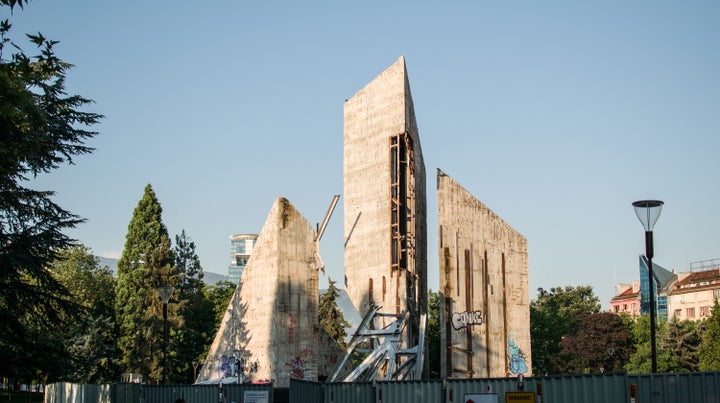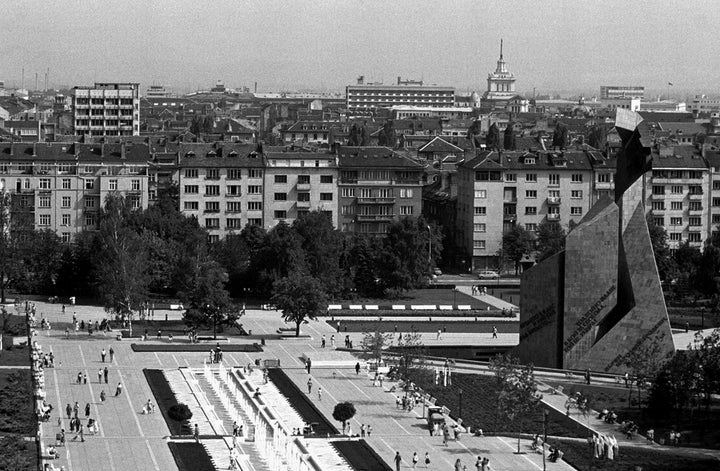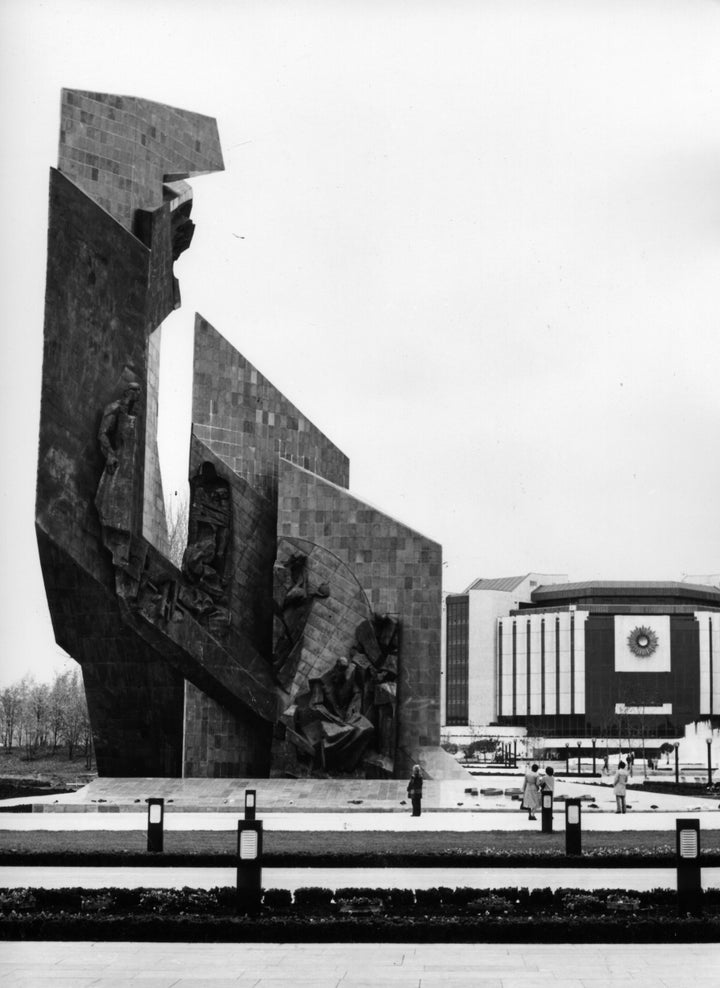
A critical engagement in cultural preservation has suddenly sparked and is gaining momentum in Sofia, the capital of Bulgaria, taking place at a point where culture and politics met in an anxious confrontation. The government’s decision to disassemble and subsequently remove a monument that marks the 1300th anniversary of the Bulgarian State’s foundation has raised a discussion around the cultural identity of the city, and united locals and professionals in a common cause, resulting in protests against the destruction of Sofia’s cultural heritage and indignation towards the wilful ignorance of politicians.
The project itself is a spectacular structure. Built by Valentin Starchev in 1981, the monument is a large-scale urban ensemble as part of the public plaza of the Bulgarian National Palace of Culture. “This art piece represents an aesthetical architectural composition, consisting of three concrete bodies and three figurative sculptural elements, forming a spiral that culminates in a bronze wing. The monument has exceptional cultural, artistic, architectonic and social values which add meaning and significance to its historical symbolism”, wrote Docomomo International, who listed the monument as Heritage in Danger.

Demonstrators during a protest against the destruction of the 1300 Years of Bulgaria monument.
Earlier, the Creative Alliance of Bulgaria released an Open Letter to the Bulgarian Prime Minister, and protests flared in the center of Sofia in the past few weeks. The association Transformatori is also taking a stand against the demolition of the monument. They launched a website, dedicated to the memorial, and have reached out to numerous organizations and professionals to shed new light on the matter in an attempt to reverse the decision of the municipality, which has already started the dismantling process.

The process of dismantling began in recent days.
Architecture, like art, can be subjective, but symbolic architecture matters and carries the history and culture not only of a place, but of a whole nation, whether the ideologies have changed or not. The city of Sofia is multilayered by history, and such bygone architecture is part of it. Although the monument has been left in a desperate condition, this serious revisionism and the relatively recent resistance from a big part of the population tell us that people still treasure the meaning of the real past and its intrinsic artifacts.

“1300 Years of Bulgaria” has not been designated an “immovable cultural heritage” in Bulgaria, but the topic of delisting and removal of monuments is very complex and sensitive. There are numerous studies and protective laws, as cultural and site preservation can only give an opportunity to deepen given context, enriching a certain society. The inestimable importance of culture is at the foundation of human progress, and a socio-economic development cannot be understood simply in terms of its economic growth, but also in terms of achieving a more intellectual and moral existence. Some argue that by destroying the memorial, there is a possibility of “change”, but little of the new public works in the country lead to culture-making. The increasing construction of shopping malls and controversial developments in Bulgaria, and the deliberate disregard for cultural patrimony present sets of dangers in creating uniformity and loss of identity.

